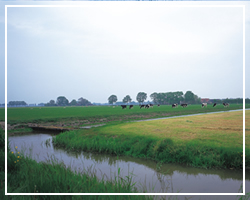Farm Security
Section 5. Structures and Utilities
Structures.
Water Sources and Evaluations
Do you have enough water to maintain your farm operations and for emergency situations? In addition to your normal water source, you should identify one or more alternate sources, especially for your animals.  Remember, if the electricity is out, you may not be able to pump water from a well for livestock. Remember, if the electricity is out, you may not be able to pump water from a well for livestock.
Thoroughly investigate the location, quantity and quality of water that is available. Generally, a well yield or stream flow of 6 to 15 gallons per minute will be required for each irrigated acre, depending on the crop and the soil at your location. If you use irrigation for frost protection, you will need a flow rate of 45 to 65 gallons per minute per acre. When using a farm pond as your water source, 1 to 1.5 acre feet of water should be stored for each acre to be irrigated. Consult your state department of natural resources for information about surface and ground water supplies available for public and private use. The department may be able to provide you with an estimate of the size, geologic makeup and yield of aquifers in your area. Also consider consulting a hydrogeologist or local well driller. They are often listed in the telephone directory or Yellow Pages. The natural resources department may be able to provide a list of hydrologists and well drillers who provide services in your area. Water quality testing is essential, especially for livestock operations and intensive systems such as greenhouses. Testing is available from private laboratories. Local health departments may also provide some services. In some cases, water treatment may be needed. When you evaluate your water supply, be sure that it is adequate, of suitable quality, and plentiful enough to meet your needs. The supply should also be economically accessible and legally available. In some cases, a permit may be required to use a water source or withdraw over a specified amount.
|
